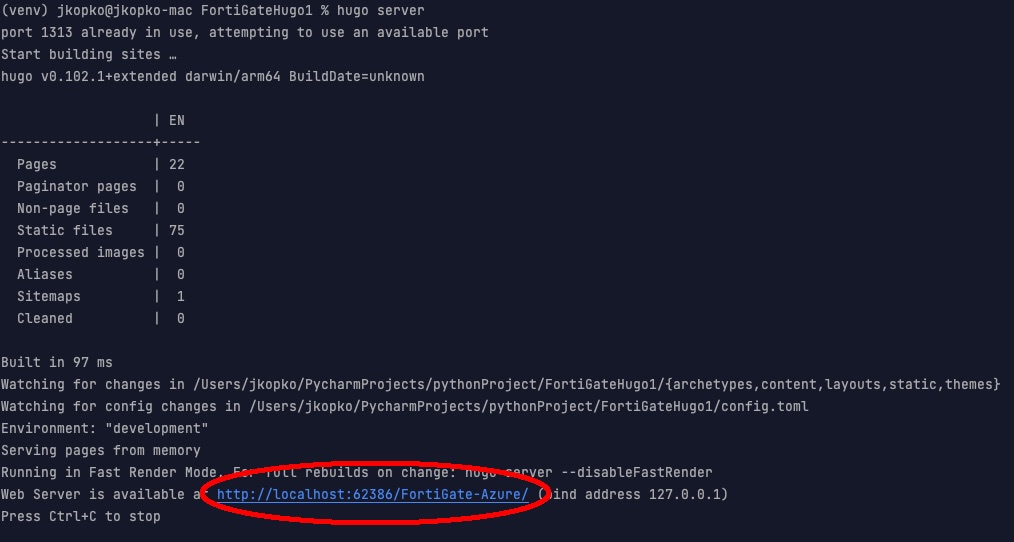Optional - Install Hugo
Tip
Hugo is installed on the container so it’s best to use it there. These instructions are included for legacy learning purposes
Hugo Local install
If you’re using a Mac, run the following brew install from your terminal
brew install hugoIf you’re using Windows, install chocolatey for windows (follow directions here). Once installed run the following
choco install hugo -confirmRun Hugo webserver locally to see a local version of the rendered website
From within the root of the repo you copied onto your system
hugo serverClick on the URL presented after the above command finishes to view a local version of your first Hugo formatted website


Clone Central Repo if not using a container
- Because you’re not using a container, you need to clone and maintain fresh copy of CentralRepo
git clone https://github.com/FortinetCloudCSE/CentralRepo.git --recursive LocalCopyCentralRepo - To pull updates later
cd LocalCopyCentralRepo git pull -r
Running Hugo locally w/ CentralRepo + UserRepo
Start in Central Repo, and use hugo webserver, pointing to proper content directory and config files
cd LocalCopyCentralRepo hugo server --contentDir $(PWD)/../UserRepo/content --config $(PWD)/../UserRepo/hugo.toml -p 8080- Flags:
- ‘–contentDir’: tell Hugo where the /content folder is
- ‘–config’: tell Hugo where the frontmatter config file is
- ‘-p’: tell Hugo webserver what port to use
- Hugo will serve up a local version of the page at: http://localhost:8080/UserRepo/
- Flags:
Now that you have Hugo running locally, you can proceed to content creation with Hugo
When you’re ready to perform a final ‘hugo build’ on your site, be sure to use the ‘-d’ flag to write files back into your UserRepo
hugo --minify -d $(PWD)/../UserRepo/docs --contentDir $(PWD)/../UserRepo/content --config $(PWD)/../UserRepo/hugo.toml --cleanDestinationDirWarning
The examples and sample code provided in this workshop are intended to be consumed as instructional content. These will help you understand how various Fortinet services can be architected to build a solution while demonstrating best practices along the way. These examples are not intended for use in production environments without full understanding of how they operate.